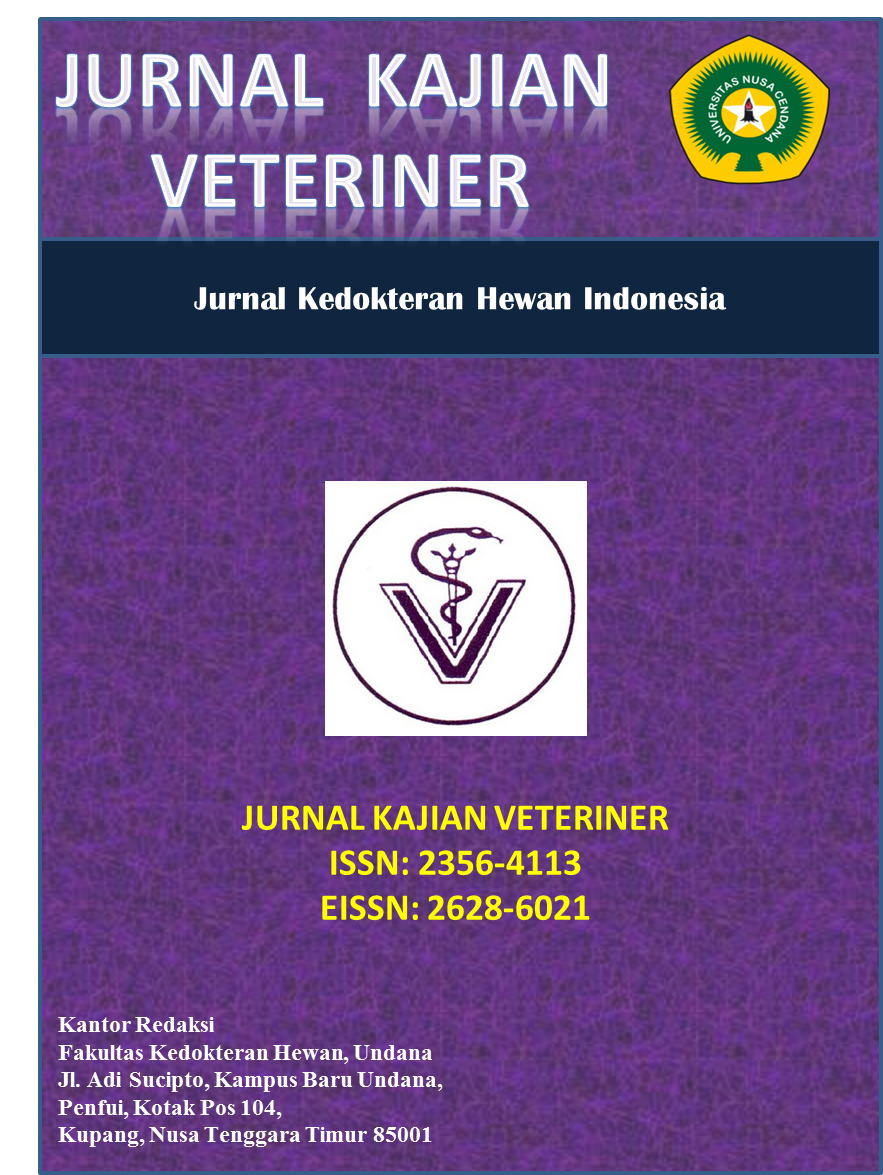HARGA DAN ESTIMASI NILAI EKONOMIS PAKAN CAIR YANG MENGANDUNG PERSENTASE BIJI ASAM BERBEDA
Price and Estimated Economic Value of Liquid Feed Containing Different Percentages of Tamarind Seeds
Abstract
One of the conventional feed ingredients commonly used as pig feed to reduce ration prices is tamarind seeds. However, tamarind seeds have a hard seed coat texture, therefore liquid feed is fermented by formulating it with other feed ingredients, in order to know whether the liquid feed has economic value or not. The purpose of this research is to examine the price of liquid feed containing different percentages of tamarind seeds and estimate their economic value in the form of total consumption costs and feed cost per gain. The research was using yellow corn, rice bran, soybean meal, meat and bone meal, whole tamarind seeds, and aquades. Liquid feed is formulated according to the needs of the grower phase of pigs. The research treatments were R0: Fermented liquid feed (FLF) containing 0% tamarind seeds, R10: FLF containing 10% tamarind seeds, R20: FLF containing 20% tamarind seeds, and R30: FLF containing 30% tamarind seeds. The variables studied were the price of liquid feed (Rp/kg), total consumption cost (Rp/kg/e), and feed cost per gain (Rp). The data were analyzed descriptively according to the research variables. The results showed that the price of liquid feed, the total cost of consumption, and the cost of the R30 treatment feed were Rp. 6868/kg, Rp. 12,579,711/kg/e, and Rp. 18,177 lower or more economical than treatment R0, R10, and R20. It was concluded that the presentation of the use of tamarind seeds in liquid feed at a level of 30% was more profitable.
Downloads
References
Bana T, Lay W, Niron S. 2018. Nilai Ekonomi Penggunaan Pollard dalam Ransum Komersial Babi Peranakan Landrace Fase Pertumbuhan. Jurnal Nukleus Peternakan, 5(2):99-107.
Millet S, Kumar S, De Boever J, Meyns T, Aluwé M, De Brabander D, and Ducatelle R. 2012. Effect of Particle Size Distribution and Dietary Crude Fiber Content on Growth Performance and Gastric Mucosa Integrity of Growing-Finishing Pigs. Vet. J.192. 316–321.
Missotten JA, Michiels J, Degroote J, De Smet S. 2015. Fermented Liquid Feed For Pigs: An An-cient Technique for the future.
National Research Council. 1998. Nutrient Requirement of Swine. 10th ed. National Academy Press. Washington D C.
Wea R. 2019. Pemanfaatan Biji Asam Terfermentasi dalam Rangka Meningkatkan Kinerja Produksi dan Kualitas Daging Babi Persilangan. Disertasi. Universitas Nusa Cendana Kupang.
Wea R, Ninu AY, Koten BB. 2020. Kualitas Nutrisi dan Anti Nutrisi Pakan Cair Fermentasi Berbahan Biji Asam. JPI. 22 (2): Pp 133-140.
Wea R, Balle-Therik JF, Kalle PR, Mullik ML. 2018. Evaluation of Dry matter, organic matter, and energy content of tamarind seed affected by soaking and fermentation. Journal of Life Sciences, 12 (1): Pp 24-29.
Wea R, Koten BB. 2020. Evaluasi Nutrisi Pakan Cair Fermentasi Berbahan Dasar Biji Asam Akibat Lama Fermentasi Berbeda. Laporan hasil penelitian. Politeknik Pertanian Negeri Kupang.
Westendarp H. 2006. Effects of Tannins in Animal Nutrition. Dtsch. Tierarztl. Wochenschr. 113:264-268.
Copyright (c) 2021 JURNAL KAJIAN VETERINER

This work is licensed under a Creative Commons Attribution-NonCommercial-NoDerivatives 4.0 International License.

 Redempta Wea(1*)
Redempta Wea(1*)








.png)


